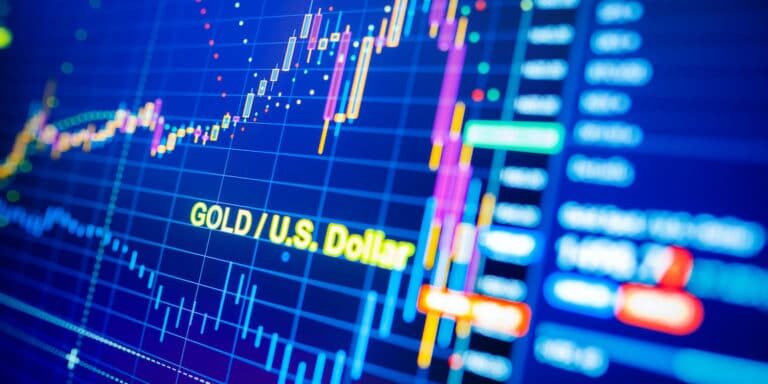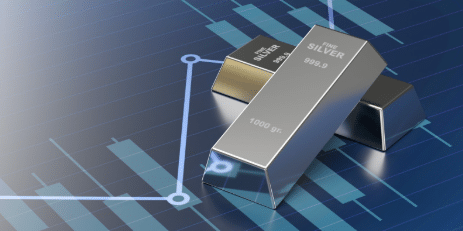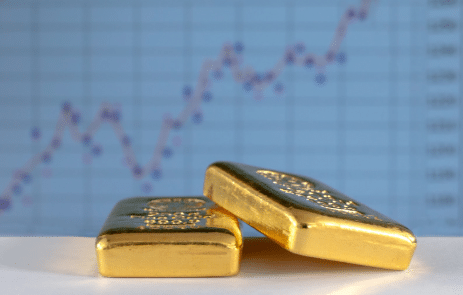
Gold And Silver Price Manipulation Explained
Silver is both money (store of value) and an input commodity and thus the impact of both industrial and monetary demand needs to be taken into consideration. Silver prices are currently about 10% below predicted values and are still near the bottom of this price cycle.
While market analysts, financial media, and commodity investors often regard silver as gold’s temperamental cousin, simply viewing silver as a more volatile version of gold fails to give the metal due consideration. Just as the physical properties of gold destined it to become an ideal store of value, silver’s properties make the metal special in its own right.
Historical currency correlations and rate-driven volatility indicate that gold trades as a money stock; however, silver is special because it’s similarly well-suited to be money as well as an input consumed in a variety of industrial processes.
Thus, silver prices are driven by monetary demand as well as supply and demand for industrial purposes, the latter of which is an important differentiator. Above-ground gold stocks have always grown at the same pace as new gold is mined, dampening the effects of inventory-determined price volatility; however, silver stocks grew much more slowly as industrial demand absorbed a large part of what was mined.
These findings provide insight into the factors that drive silver prices:
1. Silver is, like gold, a commodity store of value and free of counterparty risk, with energy-intensive replacement costs setting the lower boundary for prices (the same energy proof of value that underlies gold prices). As such, silver should be impacted by the same monetary drivers as gold prices: real interest rate expectations, central bank policy, and longer-dated energy prices.
2. As silver is a commodity with extensive industrial applications, changes in industrial drivers (i.e. changes in available inventories should impact the price of the metal.
We find that a large part of the changes in the price of silver can be explained in a regression analysis using just a few drivers: Gold prices, TIPS yields, and changes in silver ETF holdings (representing the monetary demand for silver) as well as U.S. industrial production and the ISM manufacturing PMI (the industrial demand for silver). Indeed, these drivers explain close to 80% of the year-over-year changes in silver prices in a multivariate regression analysis.
Further, the impact of changes in real-estate rates on silver prices is larger than on gold prices. There are two reasons for this:
1. The value of global silver stocks is much smaller than that of global gold stocks, which is the result of silver being used in industrial applications, and thus a change in the monetary demand for silver has a disproportionate effect.
2. Because much silver is mined as a by-product of non-silver mining operations, the silver cost curve has a discontinuous shape; base production is relatively cheap, but more costly “pure” silver projects need to become economically viable in order to meaningfully ramp up supply. Accordingly, when an increase in monetary demand leads to a shift in the cost curve, prices tend to increase disproportionately.
Silver is both money and a commodity, and silver prices should therefore follow certain behavior. Silver tends to outperform gold when falling interest rates create monetary demand for metals. 2016 was a textbook example. Real interest rates had peaked by the end of 2015 after the Fed’s first hike in December. Real interest rates then started to decline again as the market began to reassess the likelihood of further hikes. By the summer, real interest rates had again dropped into negative territory.
This move-in real interest rates pushed gold prices higher, while silver prices moved nearly twice as much. However, the market began to price in that the Fed would likely only raise rates one more time, which meant that real interest rates reversed. The election of President Trump led to a sharp upward move in real rates as the market was suddenly expecting higher economic growth. Gold prices were pushed lower again, and silver declined even more as a result.
At the end of the year, gold was still up 8% and silver was up 15%. Going into 2017, the rally in nominal yields had stalled, though inflation expectations have continued to move higher. This implies that real interest rates have been moving lower - and as a result, gold prices have risen 5% while silver prices have increased by 10%. In addition to changes in monetary demand, changes in the economic cycle lead to shifts in industrial demand for silver (which overlays monetary demand).
Central Bank Policy
As a result, while gold may be better-suited for steady long-term savings, silver can be more efficient for gaining exposure to changes in monetary policy, particularly around industrial cycles. Changes in the central bank and Federal Reserve policies have a 1:1 impact on the price of gold over the long run, meaning that the loss in purchasing power of the base currency of measurement is offset by the price increase. Therefore, gold can maintain its purchasing power in the long term, something no currency has ever been able to do throughout history.
When it comes to silver, changes in central bank policy to metals futures act like a combustive agent on the price, making silver more efficient for someone with a view on the direction of policy-driven impact on currencies who aims for maximum exposure.
However, savers typically do not have (and do not want to have) a view on the “direction” of their money. What they seek is stability, meaning they want to protect their wealth and ensure that the purchasing power of their savings is the same over long periods of time. Gold and silver according to precious metals analysts are the only monies that have ever reliably done so notwithstanding the historical, political, or economic context.
Silver prices are currently about 10% below the levels predicted; however, the model allows us to determine where it stands in a price cycle and should be construed as a trading tool that can detect mispricings. As silver prices are formed by a number of macroeconomic factors rather than the fear and greed often taunted by financial media, understanding the outlook of the factors is key when predicting where prices are likely to go.
A trend transition in the monetary demand for metals has recently been reached as both longer-dated energy prices and real interest rates have already passed their inflection points (in non-dollar terms the recovery in gold and silver prices is already well established). While we do not expect longer-dated energy prices to move much higher in the near term, real interest rates have little upside and a lot of downside over the long run. Therefore, there is a strong asymmetry in the outlook for gold prices from current levels. Silver should disproportionately benefit as gold moves higher on the back of increased monetary demand.
Store of Value
Silver prices outperformed gold during the bull years (from the early 2000s to the peak in 2011) by more than 2:1; however, during the recent correction in prices from 2012 to 2015, the decline was much sharper as silver prices dropped almost twice as much. In the end, both metals had roughly the same performance from the lows in the early 2000s until now, but silver did so with much more volatility according to the treasury. The standard deviation of the monthly returns of gold in United States dollars over that timeframe was 18%. The standard deviation in silver futures contracts for silver was 33%.
Silver is special because it’s an industrial commodity as well as money, thus silver prices are driven by monetary demand for silver in addition to supply and demand for industrial purposes.
To understand why silver is both money and a commodity, it’s best to understand first why gold is money and not a commodity in market prices. In a nutshell, gold is fundamentally different from a commodity in metals prices. While it’s mined like a commodity (and often by the same companies), it’s not an input good in a production process and therefore never consumed.
Gold Price Manipulation
Oil, for example, is produced then run through a refinery to make gasoline, diesel, and other fuels. That gasoline is then burned in an engine and evaporates into the air as CO2 and inorganic gases. It is irreversibly consumed. Gold on the other hand is never consumed. One might argue that a huge part of annual gold production ends up in jewelry, which is correct, but gold jewelry is just another form of savings (think of Indian jewelry, the value of which is determined almost entirely by the value of the contained gold and not so much by the labor that went into making the jewelry). As such, all gold jewelry, even that of lower grades (i.e. 14K gold) can be quickly be turned into bullion form for minimal cost.
Gold will necessarily have to have its extraction costs, including labor, energy, and other raw materials going into the production process. Energy is an important factor in the production costs of the gold market, which is why gold should reflect the market’s expectation of future energy costs. This is a key factor why gold can maintain its buying power for energy and goods that require energy as a large portion of their production costs (as opposed to services and downstream-marketed products).
The labor, energy, and time that goes into the production of gold could be used to make something else: a house, a car, or even food commodities. Therefore, the production of gold by metals traders always comes at the expense of something else - but unlike gold, everything else depreciates or deteriorates over time without a maintenance cost, and therefore has a different long-term value or utility as a form of savings. This relationship is the energy proof of the value of gold as held by commercial banks like Deutsche Bank or J. P. Morgan Chase in New York. The energy proof of value explains why gold has proven to be the best store of value in the futures market over any prolonged time-period in human history and during any financial crisis.
So, while commodities are produced, transported, stored, consumed, and then disappear (or have some recycling/repurposing cost relative to their use cost), gold is produced and used over and over again (in the economic calculation by regulators as a result of it being money) with almost zero marginal cost of usage, near-zero storage, and maintenance cost, and never disappears. Gold is accumulated because of its usefulness as money or for foreign exchange (a store of value relative to other commodities that are used and disappear).
Silver Price Manipulation
So, what about the silver market? Silver has also been used as money throughout human history as a financial market. The British pound is so named as 240 silver pennies were originally equivalent to 1 pound of silver. Few people are aware that the U.S. dollar was first officially defined as 371.25 grains of silver (24.056 g) in the U.S. Coinage Act in 1792 under market manipulation and price suppression. This was the weight of the Spanish milled dollar, the most widely circulating silver coin in the colonies - and probably the world - at the time. The silver standard was later replaced by a bimetallic standard which was then replaced by the gold standard in 1900.
In one way, silver has an advantage over gold when used as money, or at least this was the case in the past. It’s much more abundant and therefore not as precious as gold. Silver’s abundance makes it easier to use for smaller purchases in a world in which transactions are settled with physical coins. However, this apparent advantage comes at a cost: the cost of storage. Because silver is much less value-dense (due to its lower scarcity it has a lower energy replacement cost), it’s more expensive to store as the silver value equivalent to any amount of gold requires much more space in the precious metals market.
This also makes transportation most costly relative to its replacement cost and increases its marginal transaction cost. Silver also does not have the same level of non-reactive properties as gold. For example, it tarnishes over time, especially under certain conditions (such as exposure to sulfur). These factors, therefore, increase its carrying cost relative to gold, or its natural “monetary carry”. While this may be an insignificant carry at the individual level, at a macro level it can add up and dampen returns when currency carry is positive.
For gold, token coins have been used in the past to overcome the high value-density of gold for small transactions. Today technology allows us to use gold even for the smallest transactions. And because gold is much cheaper to store relative to its value, it’s more efficient to use gold for digital transactions rather than silver in today’s world of bullion banks. But the energy-proof value argument continues to apply for silver as much as it does for gold, which means silver is still far superior as a store of value than any currency over time, as demonstrated by the historical record.
Above Ground Stocks
The importance of the demand for silver in industrial applications leads to an important difference between gold and silver. For thousands of years, above-ground gold stocks have grown at the same pace as new gold was mined. But silver stocks grew much more slowly because industrial demand absorbed a large part of what was mined. About half of all the silver ever mined has been irrevocably consumed. While there are about 170,000 tonnes of above-ground gold stocks worth about United States dollars 7 trillion at current prices, the value of all the above-ground silver stocks is far lower.
Estimates for silver stocks are harder to come by. Estimates for the total above-ground silver stocks range somewhere between 550-850 thousand tonnes. Taking the average of that, the ratio of above-ground silver to gold stocks is about 4:1 measured by weight. Compare this to the annual production volume of both metals, which averaged around 9:1 over the past ten years. The natural abundance of both metals in the earth’s crust is even further apart at 20-25:1 according to most studies. As one can see, above-ground silver stocks have not grown nearly as much as production or natural abundance imply, because much of the mined silver has been consumed. Above-ground silver stocks are small compared to gold and when measured in value, above-ground stocks for gold exceed those of silver by 17:1.
Does a 4:1 ratio of above-ground stocks mean that the price of silver should be 1/4th of the price of gold? No, prices don’t form that way. For example, above-ground stocks of Iridium, a very rare precious metal, are just a few tonnes at best, yet it trades at not even half the price of gold. The price of iridium is set where it clears the market, meaning the price ends up where demand and supply are in equilibrium. Hence, the ratio of above-ground stocks of silver and gold doesn’t give any indication of what the price ratio of the two metals should be. However, knowing that industrial demand absorbs a large part of the mining supply each year gives a lot of insight into why silver prices behave the way they do. Because silver is also a commodity, it partly behaves like a commodity.
Gold behaves differently because it is not a commodity, it is money. Gold is never consumed and thus there is no risk of running out of gold in a production process. Above-ground stocks are so large that changes in supply simply don’t matter while demand for gold is fundamentally different from demand for a commodity. Demand for gold doesn’t mean it’s consumed and disappears. Demand for gold simply means that it changes ownership.
The financial market is crumbling and EVERYONE will be affected. Only those who know what's going on and PREPARE will survive... dare we say thrive. Our 7 Simple Action Items to Protect Your Bank Account will give you the tools you need to make informed decisions to protect yourself and the ones you love.













